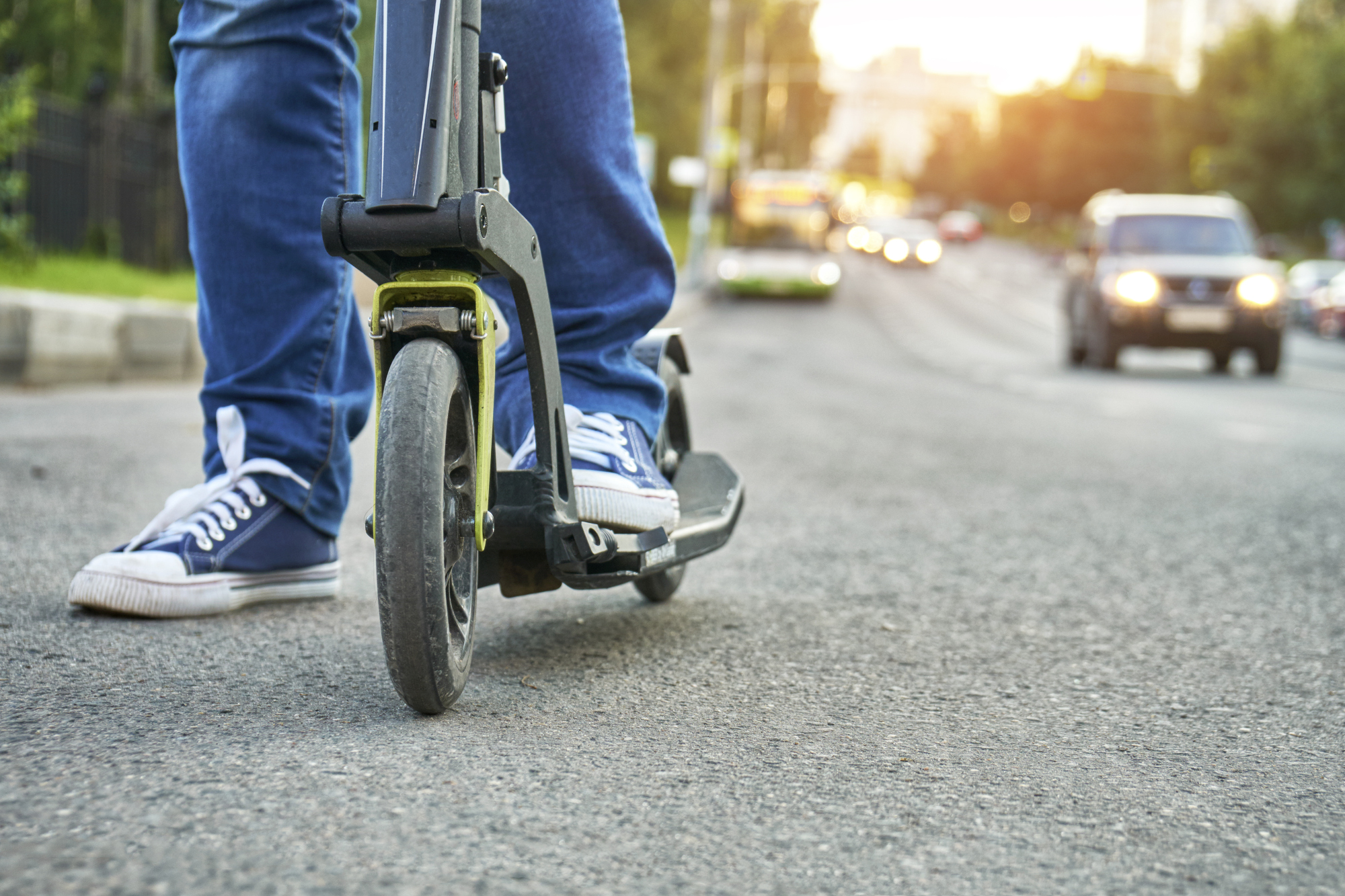Analysis of safety and practical suitability of small e-vehicles
Initial situation and motivation
New trend devices are regularly entering the market, which are promoted and advertised by retailers in different ways. In recent years, small e-vehicles have become increasingly available (e.g. hoverboards, e-scooters, longboards, Segways, monowheels etc.). Due to the increased use of different small vehicles on everyday roads, it is now necessary to create appropriate legal and infrastructural framework conditions. So far, these framework conditions have only been created reactively, although the trends were foreseeable.
The potential of electrically powered micro-vehicles is unfolding above all in combination with public transport, since the "first and last mile" of everyday journeys can be covered quickly with these vehicles, thus creating an attractive alternative to the car. In addition, an extension of accessibility on footpaths has a positive effect on active forms of mobility.
Objectives and results
Within the framework of the e-WALK project (recording of impact potentials of the everyday use of small electric vehicles for pedestrians), concrete measures were derived on the basis of the analysis of necessary framework conditions on the supply and demand side as well as of potential traffic impacts, which promote the use of small electric vehicles to increase the modal shift to means of transport of the environmental network (active mobility, public transport).
Infrastructural, user-related, legal and traffic safety aspects were taken into account. For example, problem and conflict situations were recorded in everyday tests in order to use the findings to improve road safety in the future. With the help of focus groups and online surveys, additional requirements and wishes of e-scooter users and other road users were identified, for example with regard to infrastructure and public transport providers.
The project was concluded with the creation of an implementation plan in the form of a brochure to promote the use of e-scooters. This brochure shows measures that make e-scooters attractive for the "first and last mile" in combination with public transport.
The following key measures can be derived from the project results
- Selection of a plane pavement for bicycle facilities.
- Consistent maintenance and cleaning of the road surface
- Expansion and gap closure of cycling infrastructure, especially along busy roads, public transport hubs, peri-urban areas and in small towns
- Construction of suitable, secure parking and barrier facilities for e-scooters
- Establish cycling facilities at least in accordance with RVS standards
- Free transport of e-scooters on all public transport, even at peak times.
- Prohibition of parking e-scooters on sidewalks
- Separate vehicle category e-Scooter in the UDM
- Integration of the topic of e-scooters into education (e.g. driver's license training, bicycle driving test)
- Increased public relations work on the topic of e-scooters
- Regulations and rights
- Wearing of protective clothing
- Campaigns for non-e-scooter drivers
- Targeted public relations
- Material box from BMK for provinces, municipalities, schools, etc.
- Raising awareness of the potential dangers
- Speed
- dangerous crossings
- also by accompanying use (parents)
- Introduction of minimum standards for e-scooters (e.g. tires, brakes, lighting, steering, etc.)
- Area-wide speed reductions
- Mobility as a Service
- Improvement of intermodal path planning
- Analysis of paths and path chains in communities and creation of a community mobility concept
Funded by the Federal Ministry for Climate Protection, Environment, Energy, Mobility, Innovation and Technology (BMK) and the Austrian Research Promotion Agency (FFG) within the framework of MdZ - Personenmobilität.





